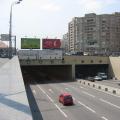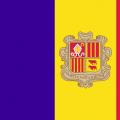Satellite map of the Transbaikal region. Map of the Trans-Baikal Territory with settlements Map of the western edge of the road
Trans-Baikal Territory is an administrative-territorial unit of the Russian Federation. The territory of the region is located in the Asian part of the country, regions of Eastern Siberia. The southern regions share a common border with Mongolia and China. The region occupies a vast territory of Transbaikalia and is administratively divided into 30 districts. The territory is dominated by moderately mountainous terrain with small areas of hilly terrain and plains.
Satellite map of Trans-Baikal Territory represents photo Trans-Baikal Territory from satellite in high resolution. Use + and – in the left corner of the map to enlarge the satellite image of the Trans-Baikal Territory.
Transbaikal region. Satellite view
Satellite map of the Trans-Baikal Territory can be viewed in both schematic map mode and satellite view mode by switching viewing modes on the right side of the map.
The river network of the region has more than 40,000 watercourses. Large rivers Shilka and Argun. Not far from Chita there is the Ivano-Arakhlei system of lakes. From the slopes of Mount Palassa, which is part of the Yablonevy Range, three large rivers of Asia begin at once: the Yenisei, Lena, and Amur. Large cities: Chita, Krasnokamsk, Borzya.
Chita. Satellite map online
(The map is controlled using the mouse, as well as signs in the right corner of the map)
The climate of Transbaikalia is sharply continental. Severe winters with persistent frosts give way to warm, sometimes hot summers. There is little precipitation, the bulk of which occurs in the summer.
Most of the region is located in the taiga zone. The low mountain and plain areas have steppe vegetation, the lower part of the mountain slopes is covered with areas of forest-steppe, above which there are zones of mountain taiga.
Such a variety of natural areas makes the flora and fauna unique. Birch, deciduous and coniferous forests are replaced by mountain taiga with thickets of Daurian larch and Siberian cedar. Higher up, there are areas of dwarf cedar and lichen tundra. Among the animals there is an abundance of valuable fur-bearing animals: sable, weasel, ermine, lynx. Abundance of large mammals: bear, deer, wapiti, badger, wolf. There are many valuable species of fish in the rivers: omul, sturgeon, taimen, whitefish.
In Transbaikalia there is the unique Daursky Nature Reserve, the Dalkhanai National Park, the Tsasucheysky Bor Nature Reserve, and the Sokhondinsky Nature Reserve. Healing springs of mineral and thermal waters have been discovered in the region.
The main attractions of Transbaikalia include the Church of the Assumption of the Mother of God in the village of Kalinino, the Kazan Cathedral, the Daursky Reserve, Alkhanay, Charsky Sands, Butinsky Palace, Lake Arey, Kodar Glaciers, the Great Source and the Aginsky Datsan.
Satellite map of Trans-Baikal Territory
Map of the Trans-Baikal Territory from satellite. You can view the satellite map of the Trans-Baikal Territory in the following modes: map of the Trans-Baikal Territory with names of objects, satellite map of the Trans-Baikal Territory, geographical map of the Trans-Baikal Territory.Transbaikal region, which is more often called simply Transbaikalia, is a region of Russia that is located in Siberia and borders several countries - Mongolia and China. The administrative center of the region is the city of Chita.
The climatic conditions in Transbaikalia are quite harsh, which is explained by the location of the Transbaikal region in the continental climate zone. Average winter temperatures reach -28...-29 C. Summer in the region is warm, but short. The average July temperature is +18…+19 C.
Main attractions Transbaikalia are classified as natural. On the territory of this region of Russia there are two large nature reserves - the Sokhondinsky and Daursky Nature Reserves. The Daursky Nature Reserve was founded relatively recently, in 1987, but is already of international importance. Its territory belongs not only to Russia, but also to Mongolia and China. In this protected area you can see more than 40 species of mammals, several hundred species of birds and more than 500 insects. There are also several large lakes in the Daursky Nature Reserve. The Sokhondinsky Nature Reserve is somewhat older and larger in area. It was founded in 1973 and is located in the Chita region. www.site
Tourists are attracted to the Trans-Baikal Territory not only by natural sites and their beauty, but also by great opportunities for both active and relaxing recreation. The main tourist routes in Transbaikalia are hiking and water. Lovers of eco-tourism prefer to spend their free time in the lap of nature in nature reserves and national parks. Those who want to relax with benefit, while also improving their health, go to health resorts. Fortunately, there are a huge number of such in Transbaikalia, because more than 300 mineral springs have been discovered in the region to date.
Map of the Trans-Baikal Territory from satellite. Explore the satellite map of the Trans-Baikal Territory online in real time. A detailed map of the Trans-Baikal Territory was created based on high-resolution satellite images. As close as possible, the satellite map of the Trans-Baikal Territory allows you to study in detail the streets, individual houses and attractions of the Trans-Baikal Territory. The map of the Trans-Baikal Territory from a satellite can easily be switched to regular map mode (diagram).
Transbaikal region, which is more often called simply Transbaikalia, is a region of Russia that is located in Siberia and borders several countries - Mongolia and China. The administrative center of the region is the city.
The climatic conditions in Transbaikalia are quite harsh, which is explained by the location of the Transbaikal region in the continental climate zone. Average winter temperatures reach -28...-29 C. Summer in the region is warm, but short. The average July temperature is +18…+19 C.
Main attractions Transbaikalia are classified as natural. On the territory of this region of Russia there are two large nature reserves - the Sokhondinsky and Daursky Nature Reserves. The Daursky Nature Reserve was founded relatively recently, in 1987, but is already of international importance. Its territory belongs not only to Russia, but also to Mongolia and China. In this protected area you can see more than 40 species of mammals, several hundred species of birds and more than 500 insects. There are also several large lakes in the Daursky Nature Reserve. The Sokhondinsky Nature Reserve is somewhat older and larger in area. It was founded in 1973 and is located in the Chita region.
Tourists are attracted to the Trans-Baikal Territory not only by natural sites and their beauty, but also by great opportunities for both active and relaxing recreation. The main tourist routes in Transbaikalia are hiking and water. Lovers of eco-tourism prefer to spend their free time in the lap of nature in nature reserves and national parks. Those who want to relax with benefit, while also improving their health, go to health resorts. Fortunately, there are a huge number of such in Transbaikalia, because more than 300 mineral springs have been discovered in the region to date.
The most famous resorts of the Trans-Baikal Territory are Darasun, Molokovka, Shivanda and Yamarovka.
Maps of cities of the Trans-Baikal Territory: Chita | Balei | Borzya | Krasnokamensk | Mogocha | Nerchinsk | Petrovsk-Zabaikalsky | Sretensk | Khilok | Shilka
Trans-Baikal Territory on the map of Russia
The Trans-Baikal Territory is located in Eastern Siberia of Russia. It stretches from south to north for many thousands of kilometers. Its most extreme point is considered to be the Baikal-Amur Mainline. Plains and high mountains all belong to the topography of Transbaikalia.
The climate in the Trans-Baikal Territory is continental and harsh. Atmospheric precipitation is rare. It's cold in winter, cool in summer.
Scientists claim that life in this ecologically clean place began approximately long before modern days. It was somewhere between 35 and 150 thousand years ago. On the surface, archaeologists have recently found the first traces of human presence near the Khilok River. According to the latest census data, more than one million people now live in the region.
Look at the detailed map of the Trans-Baikal Territory with settlements, the territorial and administrative divisions are marked. These are more than 800 rural settlements, 42 urban villages and quite a lot of cities.
The attractions are the marble gorge. A mineral spring flows in this small valley. The house-museum of the wives of the Decembrists is located in the city of Zabaikalsky - Petrovsky. In it now you can see portals with bas-reliefs, monuments - crosses, sculptural compositions and so on. A map of the Trans-Baikal Territory can tell a lot of interesting things.
 Lefortovo tunnel: truth and myths Third transport ring Lefortovo tunnel
Lefortovo tunnel: truth and myths Third transport ring Lefortovo tunnel Facts about Andorra. This is interesting! Andorra: the smallest country in the world What professions are prohibited in Andorra
Facts about Andorra. This is interesting! Andorra: the smallest country in the world What professions are prohibited in Andorra The Jews themselves prove: there are Jews and there are Jews!
The Jews themselves prove: there are Jews and there are Jews!